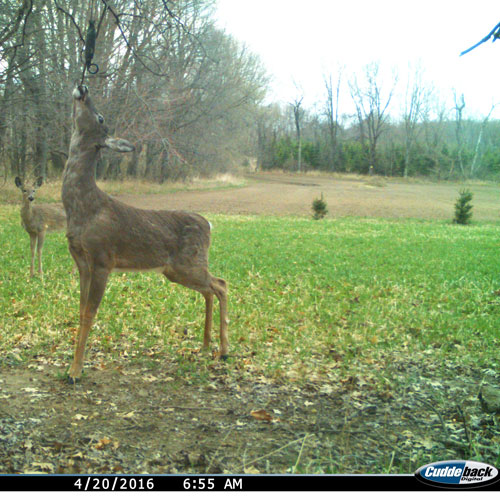States like Minnesota and Pennsylvania have implemented bans on the use of urine-based scents in chronic wasting disease (CWD) management zones. These are products that have been widely used by hunters for many decades to help them be more successful in the field. These bans take away a great tradition and an important tool from hunters in those areas.
The Argument Against Urine-Based Scents: Why it’s Wrong
The argument made by rule makers to ban these products is that they unnaturally congregate deer like bait or feed, thereby increasing interaction between animals and possibly increasing the spread of disease. While a scent set-up can effectively attract the interest of deer nearby for a short period of time to the benefit of a hunter, putting a small amount of deer urine on some wicks is insignificant regarding the overall “congregation of animals” argument. It would cause no more congregation than using a call or decoy and is a natural occurrence of deer already in the area.
A typical deer releases about 64 ounces of urine per day in good weather conditions and 42 ounces in bad weather conditions, which calculates to approximately 150 gallons per year. We have never verified the frequency on camera, but our assumption is that each deer urinates, on average, four to six times per day. That’s over 1,800 times per year. The point is that deer are naturally urinating exponentially more urine in the general area already versus a hunter using 1 or 2 ounces of urine that lasts a few hours to attract deer closer to his hunting location. Even with deer lure, you still have to be in a good spot where deer already exist. It does not bring in dozens of bucks from far away for extended periods of time like bait or feed might. The animals do not eat the scent and do not spend long periods of time there interacting with each other like they would at a bait pile. The animals that are attracted live and urinate all around that area already.

If you made any legitimate argument at all, it would be that you are adding scent locations to the already natural ones. But then this logic would mean that deer are actually decreasing the amount of congregation because now they are attracted to multiple spots versus just the natural ones that were going to be there anyway. Plus, the urine deposits would be more diluted because there are more of them. Most importantly, urine-based scents help hunters to be more successful, decreasing the population, further decreasing natural congregation of deer in that area over long periods of time. If using urine-based lures encourages deer to move around to these different scent locations actually decreasing congregation at the natural scent locations, thereby diluting the urine deposits in these natural locations and increasing hunters’ success therefore lowering the risk of disease transmission, then what is the Wildlife Agency really trying to accomplish with this rule?
It is also important to note that lead authors of the most commonly referenced studies on urine and CWD agree that “the risk of urine-based scents spreading CWD is virtually zero.” See more about this at www.wdfacts.org.
How to Spark Change
We encourage hunters to express their thoughts and comments on these rules and ask for change.
Minnesota hunters can comment to the Minnesota Department of Natural Resources on their website or by sending an email to info.dnr@state.mn.us.
Pennsylvania hunters can comment to the Pennsylvania Game Commission on their website or by emailing them at pgccomments@pa.gov.











































